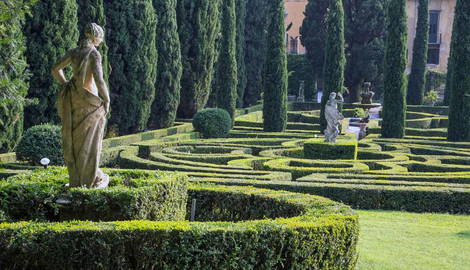
Throughout the history of Western towns and cities, urban green spaces have always served purposes linked to beauty, relaxation, status, and culture. The captivating Renaissance gardens which emerged in the 15th century are examples of gardens designed for cultural representation and status. Emerging in the era of the Renaissance, the gardens originated in Italy and are sometimes called Italian gardens. Some common features of the gardens included picturesque views, grottoes, statues, fountains and secret gardens. Some notable examples of Renaissance gardens in existence today include Villa Medici Fiesole, Boboli Gardens, Villa Madama, and Villa D’este.
However, public green spaces such as New York’s Central Park provide a place for leisure and relaxation for the public. That said, public green spaces are usually created and maintained through government development policies and zoning plans. In other times, private initiatives are involved in their creation.
What Are the Benefits of Green Spaces?

The benefits of urban green spaces for public health and city planning have been researched for many years and it has been found that urban natural areas such as parks, gardens, and riversides allow for exercise, social gatherings, and serenity for mental calmness and stress relief. These aspects lead to both direct and indirect improvements in physical and mental health. As a result, urban planning policies around the world are evolving to add more green spaces in urban centers.
Reduced exposure to environmental hazards in urban green spaces has also been found to promote good health. The urban green zones also help to protect people from harsh climatic conditions. Lush environments, for example, provide shade in cities during phenomena like heat waves.

Besides the aforementioned advantages, they also offer environmental benefits. As climate change worsens, adding nature parks to cities helps to offset a city’s carbon emissions. Urban green spaces have an economic advantage as well, as they sometimes boost tourism. New York’s Central Park, for example, happens to be one of the city’s most visited attractions. As such, it is a significant contributor to the city’s tourism appeal. Increased tourism is beneficial to local businesses and provides both direct and indirect revenue to the city. The park features beautiful woodland areas, extensive lawns, and a lake.
When Did the Concept of Urban Green Spaces Begin?

The first parks and gardens in urban spaces emerged in the ancient cities of Egypt and Mesopotamia. However, ancient Romans were among the first societies in human history to intentionally incorporate them into city plans at scale due to their benefits. For example the Campus Martius, an ancient military training area, was transformed by Emperor Augustus into a serene park with lakes and areas for recreation and relaxation. At the time, wealthy Romans built garden villas for this very purpose and for grandeur.
The Romans valued nature for several main reasons. For them, it signaled an advancement in civility. They also believed that nature promoted health and well-being. Thus they coined the term ‘rus in urbe’ in the 1700s meaning “country in the city” to refer to the concept. The idea peaked with Emperor Nero’s Domus Aurea which brought nature into the city on a grand scale. Situated on the Oppian Hill in ancient Rome, Nero’s palace complex held many wild and tame animals as well as vineyards and open grounds. Today, the term is sometimes used to refer to urban green spaces.
How Did the Park Movement Contribute to the Embrace of Urban Green Spaces?

In 1833, a report titled “The Report of the Select Commission on Public Walks” was released in Britain. It supported the idea of creating public parks in cities to help improve the quality of life for people living there. The report underlined that as more people lived in crowded areas, tranquil places to exercise and relax outdoors were being squeezed out as land got fenced off and concrete buildings increased.
After seven years of pushing for change, the city of Manchester formed its own Committee for Public Walks, Gardens & Playgrounds in 1840. Subsequently in 1846, three parks were opened in Manchester. They included Philips Park, Queen’s Park, and Peel Park. The development marked the beginning of a movement to create city-owned parks. By the end of the 1800s, almost every European city had at least one park ran by the local government.
Today, the concept of urban green spaces has become widespread. Some of the cities with the highest number of green spaces today include Tokyo, London, Paris, Singapore, and New York.









